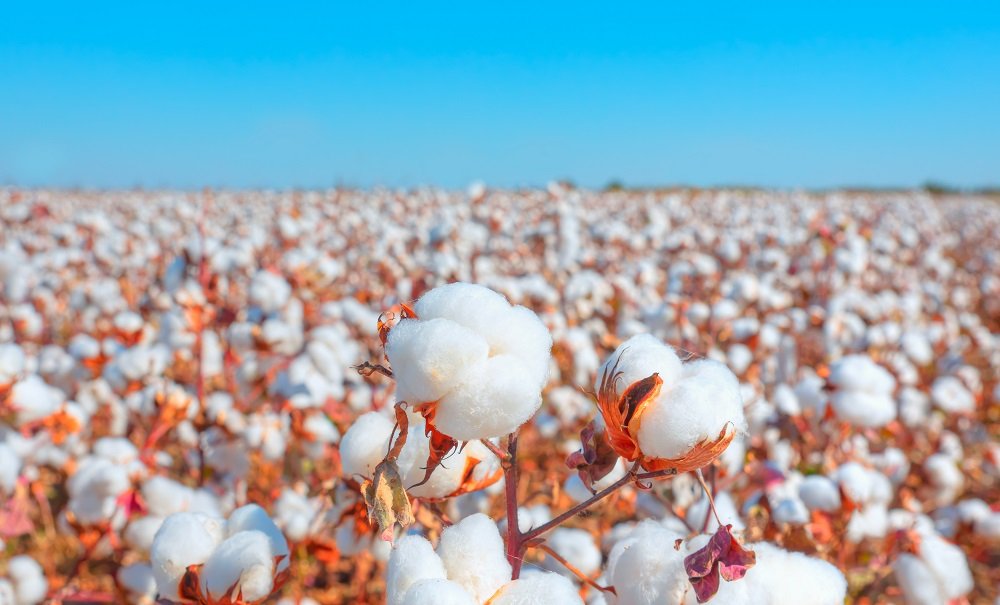
Hennie Bruwer (HB): Ironically, we are currently seeing, and will continue to see, an increase in the number of cotton farmers in South Africa as a result of climate change. This is because cotton can better withstand drier, hotter conditions than other crops grown here.
So while we’re experiencing an increase in heat units and a shifting planting season as a result of climate change, cotton crops are not yet adversely affected.
Water is becoming a bigger issue, as South Africa is a semi-arid country. No new dams have been built since 1994, and our river systems are under pressure. This will also lead us away from thirstier crops to more hectares under cotton, as is already the case. But since cotton still requires water, any reduction in what is necessary to grow a crop will ultimately be detrimental.
Lena Staafgard (LS): Climate change is putting pressure on South Africa’s water supply, leaving farmers to contend with droughts, especially in the Northern Cape. This is particularly challenging for smallholder cotton farmers, who may lack the knowledge and expertise to address these issues. Government funding and support for cotton production could help, but is limited.
Globally, research has shown that all cotton-growing regions will be affected by climate risks, predominantly through heat and water stress, but also through shortened growing seasons. Our focus, therefore, is on helping cotton farmers, especially smallholders, to build climate resilience.
Cotton South Africa (Cotton SA), the implementing partner of the Better Cotton Initiative (BCI) in South Africa, is providing training to BCI farmers across the country, helping them adopt more sustainable practices, such as more efficient irrigation methods and the use of natural pesticides.
We’re also assisting large farms to take full advantage of precision agriculture tools (including satellite data and remote sensing devices), to identify risks, and to optimise farm management, while establishing a formal training programme for smallholder cotton farmers.
Currently, between 60% and 70% of South African cotton farmers have BCI accreditation. This means that most are already implementing systems that make them more resilient and sustainable, and their product more acceptable to consumers.
To qualify, farmers need to fulfil certain criteria on which they’re audited annually. These include implementing policies that protect biodiversity, reduce water usage, improve labour practices, increase soil health and ensure higher yield.
The BCI criteria are actually very well suited to South African farmers, as our labour and environmental laws already ensure that farmers comply. Furthermore, our producers are highly cost-conscious, and using more inputs or water than is necessary isn’t feasible or profitable. We can’t afford to squander our resources, so complying is not overly difficult.
That said, our goal is still to get to 100% BCI certification in South Africa.
Licensing more small-scale farmers remains a challenge where government funding isn’t available. Building smallholders’ capacity and helping them gain access to vital funding and inputs remain important priorities for the BCI.: Building on our experience in developing and funding global programmes to reach cotton farmers at scale, we aim to leverage our convening power and global network to drive change across the cotton sector and beyond.
Our goal is to gather stakeholders worldwide to help encourage and grow financial schemes that create incentives for all cotton farmers to adopt more sustainable practices, and to compensate them in the event of climate disasters.
We’re also continually looking at better ways to test, monitor and scale innovative climate-friendly practices. For example, we’re supporting farmers to prioritise soil conservation by using methods such as cover cropping and strip-tillage.
In addition, our partners are working with farmers to use beneficial insects as an alternative to synthetic pesticides, and to employ techniques that use water resources more efficiently, such as short-furrow irrigation, where water flows faster and is distributed more evenly. Combined, practices of this kind can help with both climate change adaptation and mitigation.
The Better Cotton Standard system has always had a strong focus on soil health, but as we move forward, we’ll look to further promote principles of regenerative agriculture that enhance soil health by restoring organic carbon in the soil. Farming practices can play an important role in the soil’s ability to sequester carbon and provide the potential for it to become a carbon sink.
Source: farmersweekly